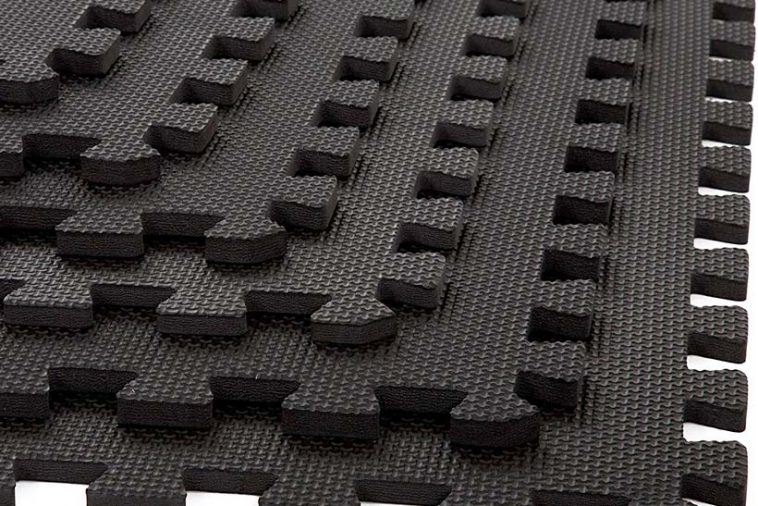- Like
- SHARE
- Digg
- Del
- Tumblr
- VKontakte
- Flattr
- Buffer
- Love This
- Save
- Odnoklassniki
- Meneame
- Blogger
- Amazon
- Yahoo Mail
- Gmail
- AOL
- Newsvine
- HackerNews
- Evernote
- MySpace
- Mail.ru
- Viadeo
- Line
- Comments
- Yummly
- SMS
- Viber
- Telegram
- JOIN
- Skype
- Facebook Messenger
- Kakao
- LiveJournal
- Yammer
- Edgar
- Fintel
- Mix
- Instapaper
- Copy Link
Weight training demands more than just proper equipment and technique— it requires the right foundation beneath your feet.
Whether you’re setting up a home gym or upgrading a commercial facility, your gym flooring choice can impact performance, safety, and equipment longevity.
Let’s explore the best options for weight training environments.
Why Proper Flooring Matters for Weight Training
Before diving into specific materials, it’s worth understanding why specialised flooring is essential for weight training:
- Impact absorption: Reduces stress on joints and minimizes noise when weights are dropped
- Equipment protection: Prevents damage to both your weights and the subfloor underneath
- Safety: Provides proper traction to prevent slips during heavy lifts
- Durability: Withstands constant punishment from heavy equipment and foot traffic
- Maintenance: Easy to clean and maintain in environments where sweat is inevitable
Top Flooring Options for Weight Training
1. Rubber Flooring
Rubber remains the gold standard for weight training areas, and for good reason.
Pros:
- Exceptional shock absorption
- Protects subfloors from dropped weights
- Available in various thicknesses (8mm-40mm)
- Good traction even when wet
- Relatively easy to install
- Environmentally friendly options made from recycled materials
Cons:
- Higher initial cost compared to some alternatives
- Heavier rubber tiles can be difficult to transport and install
- May have a distinct odour initially, particularly with recycled rubber
Best for: Dedicated weight training areas, especially where Olympic lifting or deadlifts occur regularly.
2. EVA Foam Tiles
EVA (Ethylene-vinyl acetate) foam tiles offer a more budget-friendly alternative.
Pros:
- Lightweight and easy to install
- Comfortable underfoot
- Available in various colours and thicknesses
- Affordable entry point for home gyms
- Simple to replace individual damaged tiles
Cons:
- Less durable than rubber
- Can indent permanently under heavy equipment
- Not suitable for dropping very heavy weights
- May slide on smooth subfloors without proper securing
Best for: Light to moderate home gyms and workout areas where heavy weights aren’t regularly dropped.
3. Vinyl Flooring
While not specifically designed for weight training, commercial- grade vinyl has found its place in many gyms.
Pros:
- Sleek, professional appearance
- Extremely easy to clean and maintain
- Available in rolls for seamless installation
- Good durability against foot traffic
- Water-resistant
Cons:
- Limited shock absorption
- Requires underlayment for weight training areas
- Can be damaged by dropped weights without proper protection
- May become slippery when wet
Best for: Multi-purpose fitness areas with some weight training, especially when aesthetics are important.
4. Specialised Lifting Platforms
For serious lifters, dedicated lifting platforms provide optimal performance.
Pros:
- Purpose-built for heavy lifting
- Exceptional shock absorption and noise reduction
- Often feature wood sections for Olympic lifts with rubber borders
- Professional appearance
- Can be built DIY or purchased pre-made
Cons:
- Expensive compared to basic flooring solutions
- Takes up dedicated space that can’t easily be repurposed
- Permanent or semi-permanent installation
- May require professional installation
Best for: Dedicated Olympic lifting areas, CrossFit boxes, and serious home gym setups.
Thickness Considerations for Weight Training Flooring
The ideal thickness depends on the type of training and weight load:
- 8-12mm: Suitable for general weight training with dumbbells and machines
- 15-20mm: Recommended for areas with moderate free weight use
- 25-40mm: Necessary for Olympic lifting, powerlifting, and regularly dropped weights
Installation Tips
- Assess your subfloor: Concrete provides the best foundation; wooden subfloors may need additional reinforcement
- Acclimate your flooring: Allow rubber and foam materials to adjust to room temperature before installation
- Consider interlocking vs. straight-edge tiles: Interlocking designs reduce shifting but can be more difficult to replace individually
- Create protective zones: Place extra-thick mats in areas where weights are frequently dropped
- Mind the gaps: Ensure tight installation to prevent edges from curling or creating trip hazards
Maintenance Best Practices
- Regular cleaning: Vacuum and mop with mild cleaner suitable for your specific flooring material
- Inspect for damage: Check regularly for signs of wear or damage, especially in high-impact areas
- Rotate tiles: If possible, rotate tiles from high to low-use areas to extend overall lifespan
- Address spills promptly: Even water-resistant flooring can be damaged by prolonged exposure to liquids
Cost Considerations
Budget planning is essential when selecting gym flooring. Here’s what to expect:
- EVA Foam: £15-30 per square metre
- Basic Rubber Tiles: £25-50 per square metre
- Premium Rubber Flooring: £50-100+ per square metre
- Specialised Lifting Platforms: £300-1,000+ for a complete platform
The Final Verdict
For most serious weight training environments, high-quality rubber flooring in the 15-25mm range offers the best balance of protection, durability, and value. The specific thickness should match your heaviest regular activities, with additional protection in dedicated drop zones.
For home gyms with budget constraints, consider a hybrid approach— using thinner, more affordable flooring throughout most of the space, with thicker rubber mats positioned strategically where weights might be dropped.
Remember that quality flooring is an investment in both safety and equipment longevity. Cutting corners here often leads to greater expense down the road through injuries or damage to weights and subfloors.
About Theresa Duncan
Originally from Detroit, MI, Theresa has been offering health and fitness advice for the last 30 years while working as an engineer. She decided to turn her passion into a profession, and finds nothing more satisfying than helping others reach their health and fitness goals.

